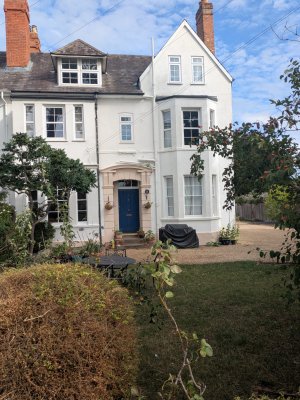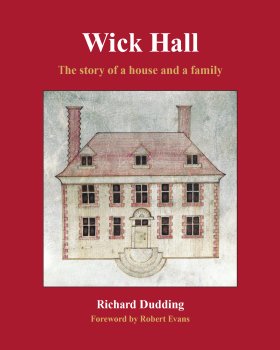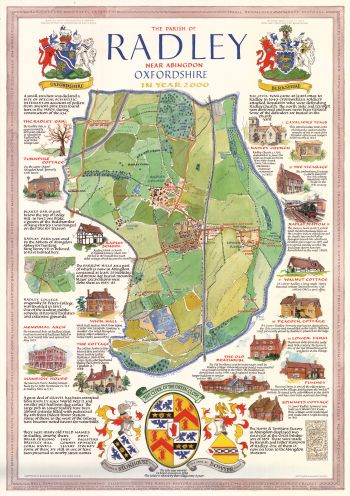The marketing material for the 2025 sale of the top-floor flat at 75 Foxborough Road states it is part of a ‘former school conversion’. What school you may ask? The house was a school but only for a short time back in the 1940s. Living there during the mid-1940s, when it was a large semi-detached Victorian house over three floors known as East Cottage, were Stephen and Barbara Dockar Drysdale with their family. More about East Cottage

Dublin-born Barbara Estelle Gordon (1912-1999) married (Joseph) Stephen Lloyd Dockar Drysdale (1911-1996) at Radley Church in April 1936. Before her marriage, Barbara had lived with her mother in a cottage in Blewbury, Oxfordshire, where she had run a small day nursery/ playgroup. At the time of her marriage, she and her mother were living at Neat Home Farm in Radley.
Barbara and Stephen started their married life at Home Farm, another of the Radley farms owned by the Dockar Drysdale family. At Home Farm, Barbara again set up a nursery for local children while Stephen ran the farm and acted as a land agent. A daughter (1937) and then a son (1938) were born at Home Farm; the family was living there when the Second World War began in September 1939.
Barbara’s ability to manage and communicate with children had been noticed by a local doctor who was aware of problems in placing evacuated children with social, emotional and behavioural issues with Radley families. He asked Barbara to take some of the youngest into her nursery school. When the school outgrew Home Farm, Barbara and Stephen moved sometime in 1943 or soon after to East Cottage. It’s not known whether they bought or rented the property, though the latter seems more likely. The nursery school children came to live there with the family, and Barbara employed teaching and domestic staff to help her. Stephen joined the Army in 1944 or 1945 and served as an officer in the Royal Army Service Corps in Egypt, Palestine and Cyprus.
Barbara’s pioneering work was recognised towards the end of the war when officials from the Home Office and the Ministry of Education approached her about setting up a special school on a more formal basis for troubled and traumatised children. With this in mind, Barbara arranged to buy an old farmhouse at Standlake in Oxfordshire, writing to Stephen to tell him what she’d done! Stephen was able to provide funds for the new school from his share of Wick Hall Estates Limited (formed in 1944 to manage the Dockar Drysdale family estate). He left active service with the Army to help Barbara run the new school at Standlake, where he was affectionately known as ‘Mr D’.
The Drysdales and their family of by now four children (two girls and two boys) moved to Standlake in 1948 to set up an independent, residential special school. The school’s name, the Mulberry Bush School, was inspired by the children drinking their morning milk under a mulberry tree at Radley. We know from various sources that the school’s name was first used for its forerunner in Radley:
- Ada Kathleen Belcher, a widow aged 26, gave her address in the Radley Church Register entry for her marriage in March 1946 to Richard Lynne as the ‘Mulbury Rd School Rad’.
- The Radley electoral registers for 1946, 1947 and 1948 record Barbara Dockar Drysdale’s address as ‘Mulberry Bush School’. Stephen’s name does not appear in these registers because he’s still serving with the Army. Barbara is not listed in the 1949 register, consistent with the move to Standlake.
Having set up the school at Standlake, Barbara sought to learn more about child psychoanalysis and to gain qualifications to support her new role. She studied psychotherapy at the Tavistock Clinic and the Maudsley Hospital in London, and later became a famous psychotherapist renowned for her pioneering work with troubled and traumatised young children. Today the Mulberry Bush School is a not-for-profit charity.
If you want to know more about the early years of the Mulberry Bush School, there’s a YouTube video recorded by Barbara’s daughter Sally Cooper and Sally Finch (an ex-pupil). For more about Barbara’s life, see her entry in the Mulberry Bush School Research Archive and the many obituaries published after her death in 1999.

